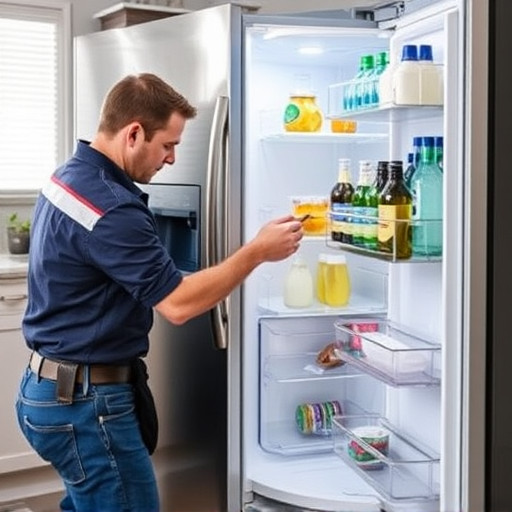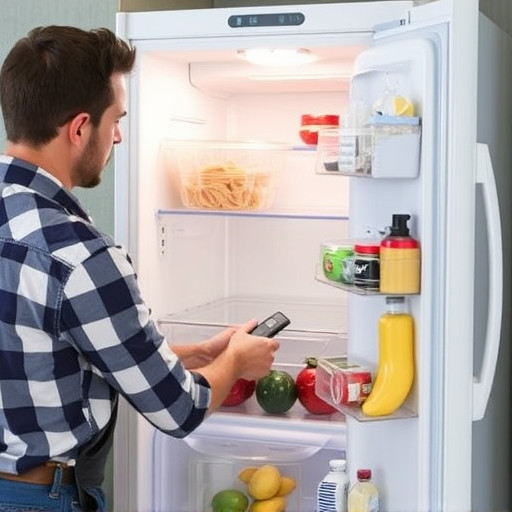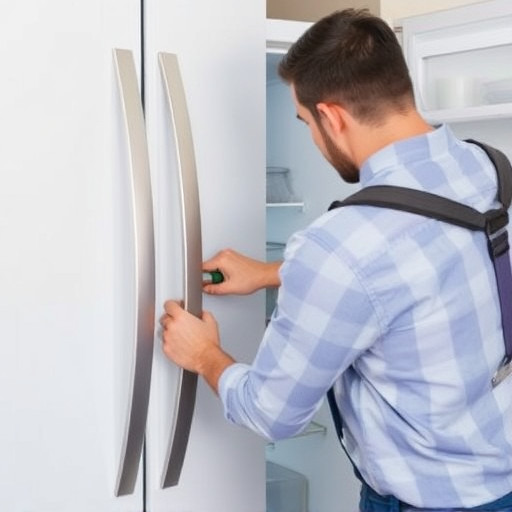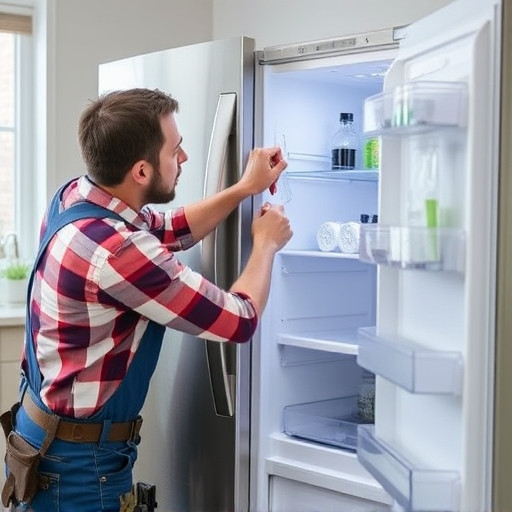Refrigerator repair technicians require precise temperature calibration skills to maintain optimal appliance performance and longevity. They utilize diagnostic tools like thermometers, data loggers, and thermal imaging cameras for accurate temperature readings and issue identification. Common problems addressed include uneven cooling due to blockages or faulty sensors, which can be prevented through regular cleaning and maintenance. Quick resolution involves checking power supplies, calibrating thermostats, and replacing worn-out sensors for consistent temperatures, enhancing energy efficiency, preventing food spoilage, and increasing customer satisfaction.
Maintaining optimal temperature settings is crucial for efficient refrigerator operation. This article delves into the essential aspect of temperature calibration and diagnostics, serving as a comprehensive guide for refrigerator repair enthusiasts. We explore the foundational principles of understanding temperature calibration, empowering you with the knowledge to interpret accurate readings using advanced tools and techniques. Additionally, we provide troubleshooting tips to identify and resolve common issues, ensuring your refrigerator operates seamlessly after calibration. Master these techniques, and you’ll be well-equipped to tackle any refrigerator repair challenge.
- Understanding Temperature Calibration: The Foundation of Refrigerator Repair
- Diagnostic Tools and Techniques for Accurate Temperature Readings
- Troubleshooting Common Issues: Ensuring Proper Operation After Calibration
Understanding Temperature Calibration: The Foundation of Refrigerator Repair

Temperature calibration is a fundamental aspect of refrigerator repair, serving as the cornerstone for ensuring optimal performance and longevity of your cooling appliance. It involves meticulously adjusting and testing temperature control mechanisms to guarantee they function accurately and consistently. This process is paramount because even slight deviations from set parameters can lead to energy inefficiency or, worse, spoilage of food items.
For refrigerator repair technicians, understanding temperature calibration goes beyond mere academic interest; it’s a practical skill that directly impacts customer satisfaction. Accurate calibration ensures the fridge maintains the right chill levels for various foods, from dairy to frozen treats. By addressing temperature issues early through precise calibration, professionals can prevent costly breakdowns and prolong the lifespan of these essential kitchen appliances.
Diagnostic Tools and Techniques for Accurate Temperature Readings

In the realm of refrigerator repair, accurate temperature calibration and diagnostics are paramount for proper operation. Refrigerators rely on precise temperature control to maintain the integrity of food items stored within. To ensure optimal performance, various diagnostic tools and techniques are employed to verify the accuracy of temperature readings. These include dedicated thermometers designed to measure temperatures across different zones inside the refrigerator, allowing technicians to identify any inconsistencies or anomalies. Advanced tools such as data loggers can record temperature fluctuations over time, providing valuable insights into the fridge’s operational patterns.
Additionally, visual inspections and thermal imaging cameras play a crucial role in diagnosing issues. Visual checks help identify potential blockages or physical damage that might affect temperature distribution. Thermal imaging cameras, on the other hand, capture heat signatures, revealing areas of uneven cooling. By combining these diagnostic methods, technicians can swiftly pinpoint problems, whether they stem from faulty sensors, malfunctioning cooling systems, or inadequate insulation—all vital considerations in ensuring a refrigerator operates at peak efficiency and extends its lifespan.
Troubleshooting Common Issues: Ensuring Proper Operation After Calibration

After calibrating your temperature control system, troubleshooting common issues is crucial to ensure proper operation. One frequent problem in refrigerator repair is uneven cooling, which could be due to blocked or dirty condensers, obstructed air vents, or inadequate insulation. Regular cleaning and maintenance of these components can prevent such issues from arising again.
Another common challenge is unexpected temperature fluctuations. This might occur due to power outages, faulty thermostats, or malfunctioning sensors. To mitigate these problems, check the power supply, inspect and calibrate thermostats, and replace any worn-out sensors as part of your refrigerator repair process. Regular monitoring and prompt action can help maintain consistent temperatures, ensuring optimal performance and longevity of your cooling system.
Proper temperature calibration is the linchpin of efficient refrigerator repair, ensuring optimal cooling performance. By understanding the fundamentals of calibration and utilizing advanced diagnostic tools, technicians can pinpoint issues swiftly. This comprehensive approach, coupled with effective troubleshooting techniques, not only resolves common problems but also guarantees your refrigerator operates at peak efficiency, maintaining ideal storage conditions for years to come. For anyone seeking refrigerator repair, these strategies are essential to achieving and maintaining excellent results.
